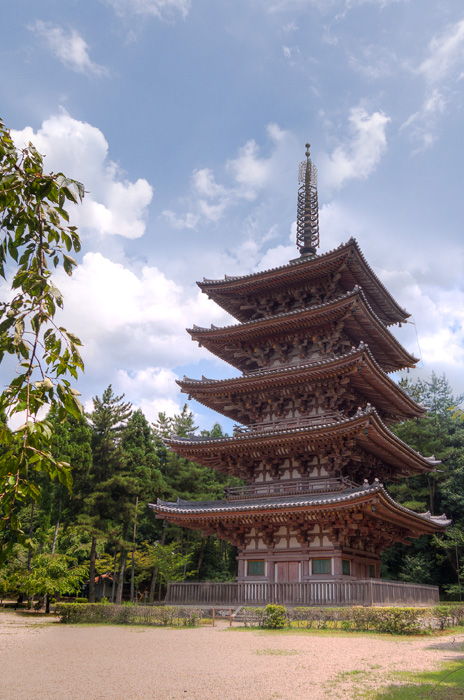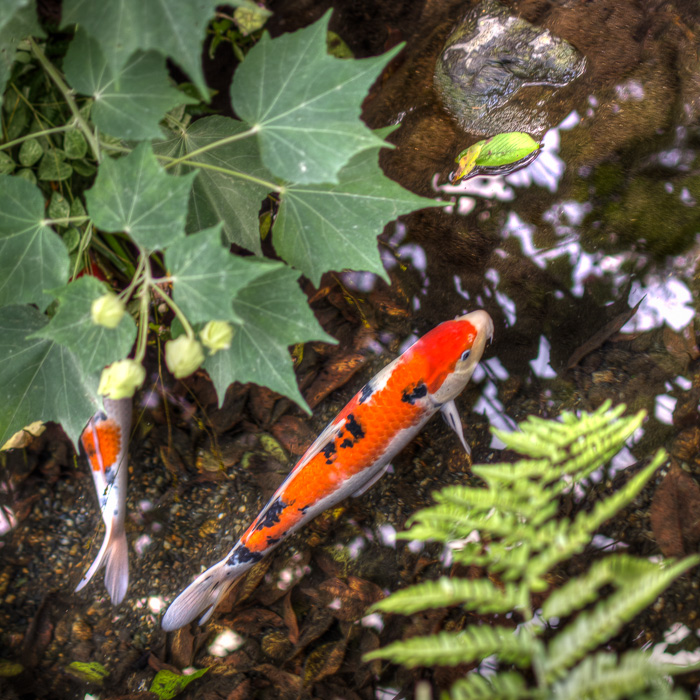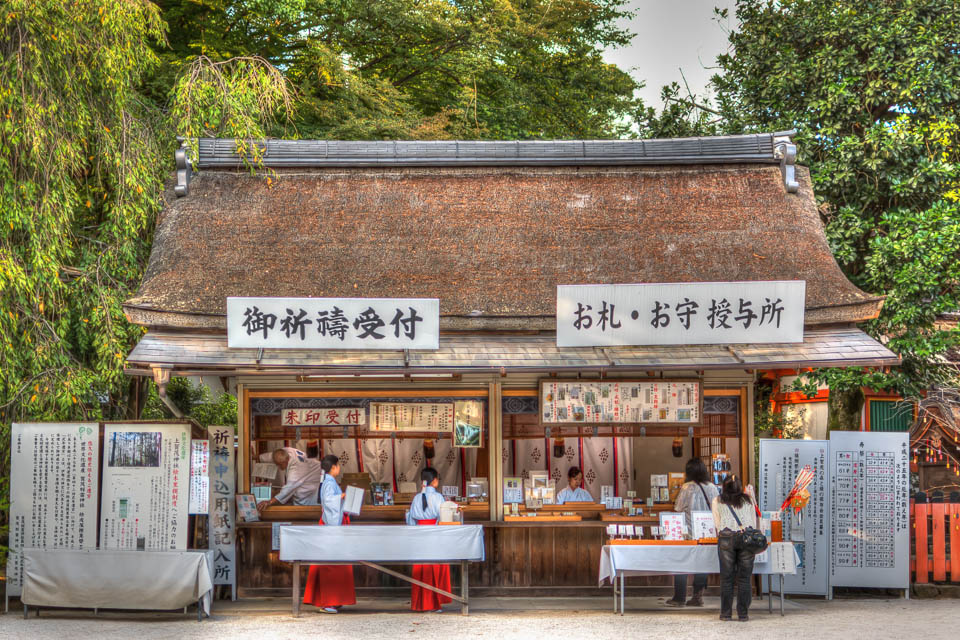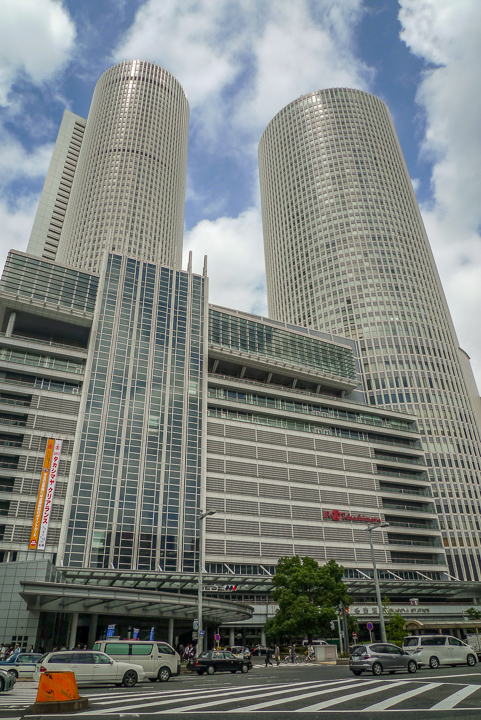Kazaridaru: Decorative Sake Barrels at a World Heritage Shrine in Kyoto (HDR Photo)
Share
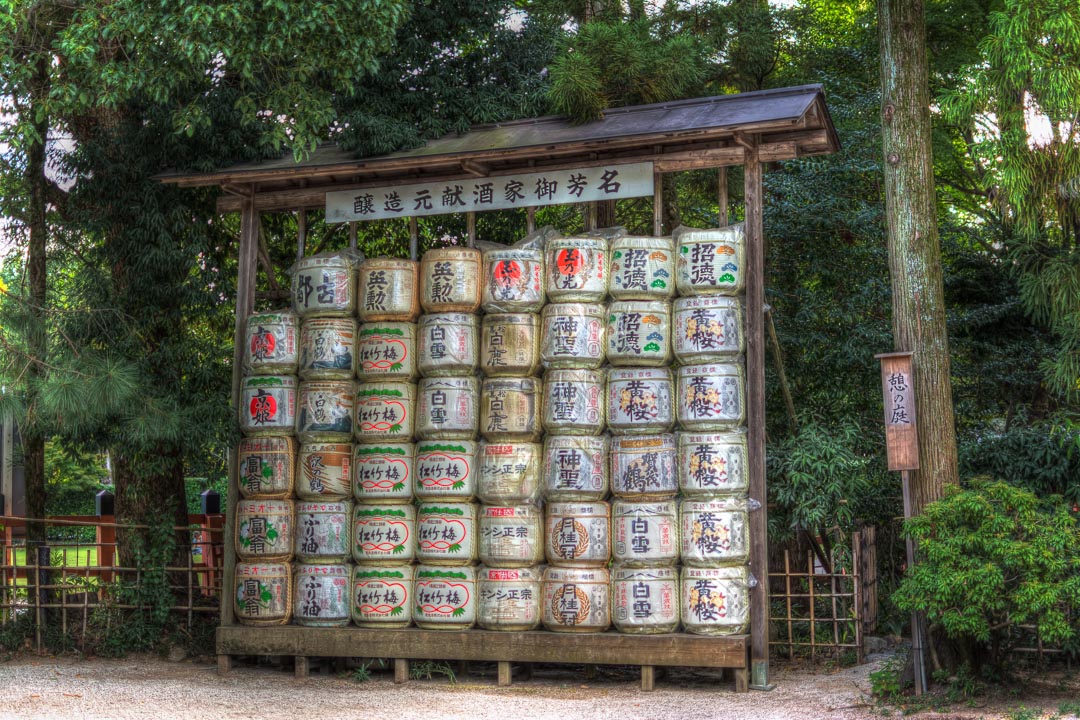
What is generally known as sake is actually called nihonshu 「Japanese rice wine, 日本酒」 in Japanese and the literal translation is “Japan’s alcohol”. Sake just means “alcohol”. Nihonshu is a very important part of Japanese culture, as traditionally it is believed that nihonshu connects people directly to the gods. It is due to this connection that nihonshu is used in Shinto ceremonies: at weddings, during New Year celebrations and at many festivals throughout the year.
What are the white round barrels at Japanese shrines?
These decorative nihonshu barrels 「kazaridaru, 飾り樽」 are shrine offerings from Japan’s nihonshu makers.
Decorative nihonshu barrels at a Kamigamo-jinja in Kyoto

NIKON D5200 (35mm, f/1.8, 1/250 sec, ISO100)
Sakedaru: Decorative Sake Barrels at Kamigamo-jinja in Kyoto (HDR Photo)
In modern times the kazaridaru are usually offered empty, with the nihonshu maker also providing one bottle of their best rice wine as part of the offering. The offering is a form of prayer for bountiful harvests of rice, and also honours the shrine’s local deity. The kanji on the decorative barrels indicate the name of the maker and their location.
Meaning behind the kazaridaru characters:
飾り = kazari, decorate
樽 = daru, barrel
Nihonshu is said to bring people together, being the traditional drink at banquets. Due to the figurative connection of Japanese people to the devine through drinking nihonshu, I’ve always thought this is where their drinking culture has spawned from. Besides having a legal drinking age of 20 years old, alcohol is almost unrestricted in Japan… you can buy it from just about anywhere (including vending machines) and drink in public, but you almost never see fights. This is the total opposite to places like Australia, where drinking is heavily regulated and there are many very serious cultural issues related to drinking.
A smaller version of this photo features in the Kamigamo-jinja, Kyoto travel guide article. Kamigamo Shrine is a UNESCO World Heritage site in Kyoto and claims to be the oldest shrine in Kyoto. The shrine is free to enter and opens every day.


